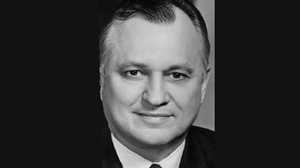How Alaska Profits from the Trans-Alaska Pipeline
The state of Alaska announced in January 2006 that it had amassed 33 billion dollars in mineral royalties — most of it oil revenue — in something called the Alaska Permanent Fund.

"The Permanent Fund was an attempt to ensure that history of Alaskan resource exploitation did not repeat itself. It was an effort to reverse the tide of Alaska economic history. To try and keep more resources here and reduce the amount that flows outside."— Terrence Cole, historian, University of Alaska Fairbanks
Savings Account for Future Generations
Almost all Alaskan oil production is on state-owned land, so the state receives revenue from four different sources: production tax, property tax, royalties and corporate tax. In 2006 alone, the state will get $3.4 billion from oil and gas. Those revenues go directly into a general fund to be used for roads, health care facilities, schools and other social services. However, at least 25 percent of all mineral royalties is deposited into the Alaska Permanent Fund, a kind of savings account for future generations of Alaskans. In 2006, the fund will increase by $600 million. Former governor Jay Hammond, who oversaw the fund's establishment, wanted to make sure the state didn't commit the same errors it had when it received money from land leases to the oil companies.
Terrence Cole: "Jay Hammond often said that Alaskans had 900 million reasons to vote for creating the Permanent Fund: he meant the $900 million the state had received from its first big oil lease sale in 1969. Within a few years it was all gone, and Alaskans did not want that to happen again."
Managing a Windfall
In 1976, shortly before the completion of the Trans-Alaska pipeline, Alaska's politicians contemplated what to do with the expected windfall it would bring. That same year, voters approved an amendment to the constitution to include the Alaska Permanent Fund.
Terrence Cole: "It would force the legislators to have to save the money and they could never spend the principal; all they could spend were the earnings. It was wildly successful. I mean, I voted for it, everyone did. It made sense. Because they figured we were going to come into a whole bunch of money. Why not save something."
A Billion Dollars in Revenue
When the money started rolling in, the permanent fund began accumulating hundreds of millions of dollars. And then by 1980, it had already surpassed the one billion mark. The Alaska State Legislature decided that everyone should get a piece of the pie.
Paying Out Dividends
In 1980 politicians proposed a program called the Alaska Permanent Fund Dividend. Under this proposal, each resident would receive $50 for each year they lived in Alaska. The U.S. Supreme Court found the proposal unconstitutional. But the legislators had a backup plan. Each person would get the same amount. In 1982, the first dividend checks were sent out in the amount of $1000.00. The dividend payments are based on a five-year average of the Permanent Fund's earnings, which helps stabilize the dividends as the stock and oil markets fluctuate from year to year. In 2005, some 600,000 Alaskans received $854.76. To date, the Permanent Fund Dividend Division has paid out nearly $14 billion.
Terrence Cole: "What has happened is that the dividend has become extraordinarily popular. The dividend has become the biggest single expense of state government. We decided to create a savings account, but the only thing we've agreed to do with it is to pay annual dividends. Since spending the earnings in any other way would reduce the dividend, there has been no support to do anything else with the fund. So that's the issue -- the dividend has become the tail that wags the dog."
Thirty-three billion dollars remain in the Alaska Permanent Fund. That money is invested in stocks, bonds, money market accounts and real estate. It's Alaska's way of saving for a rainy day.






